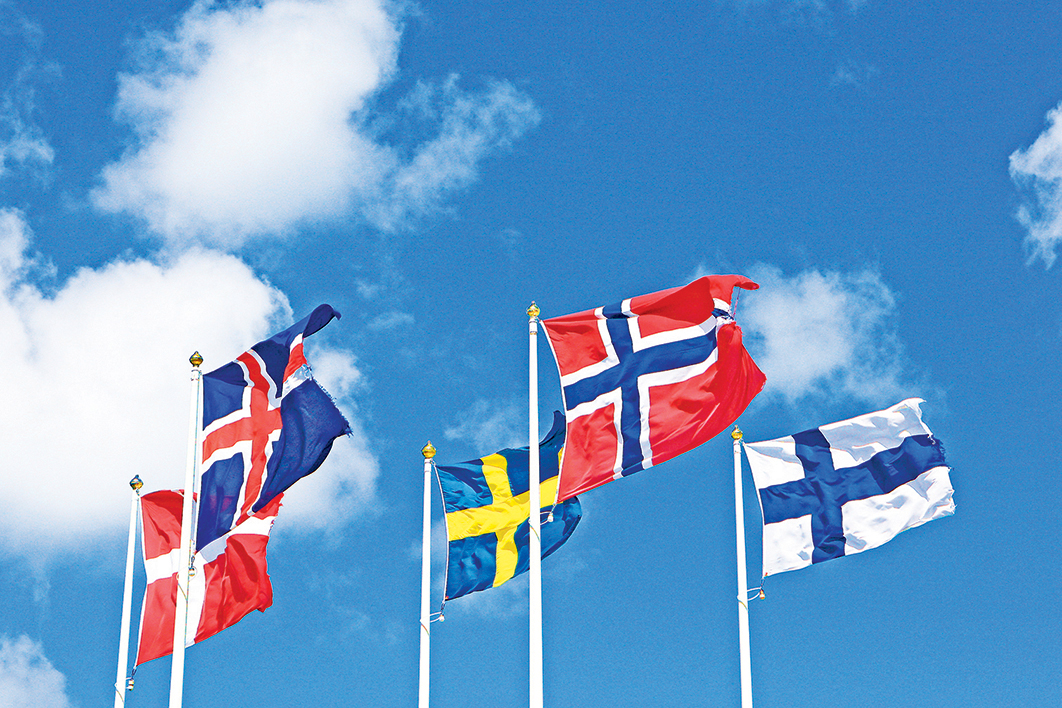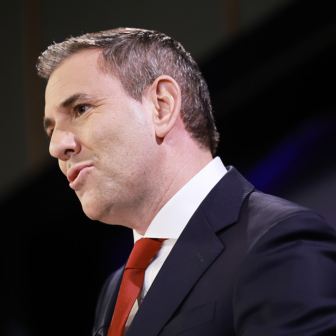The Nordic Edge: Policy Possibilities for Australia
Edited by Andrew Scott and Rod Campbell | Melbourne University Press | $32.99 | 254 pages
The Nordic countries hold a fascination for Australians looking for models of good public policy. Each of them — Sweden, Denmark, Norway, Finland and Iceland — is prosperous, each has a firmly embedded social security system, and each offers its citizens well-funded, well-functioning public services. During the decades after the second world war they sustained a vision of democratic socialism, demonstrating the viability of economic pathways other than America’s small government model and the Soviet Union’s totalitarian communism.
As the economist John Kenneth Galbraith observed, small government might deliver prosperity for some, but at a cost of public squalor. The Nordic countries proved that private and public affluence could coexist.
Contrary to the rhetoric of the right, they also showed that extending government’s reach beyond the bare minimum need not suppress people’s freedoms. Norway, Iceland and Sweden occupy the top three places on the Economist’s 2020 Democracy Index, with Finland and Denmark coming sixth and seventh. (New Zealand and Canada come between, in fourth and fifth place; Australia is equal ninth.) These same Nordic countries also come near the top of rankings on absence of corruption. And while their material living standards are high, so too are other indicators of wellbeing, such as “life satisfaction” and “work–life balance.”
To quote Michael Booth in his ever-so-slightly sarcastic book The Almost Nearly Perfect People, their populations are “not only the happiest and most contented people in the world, but also the most peaceful, tolerant, egalitarian, progressive, prosperous, modern, liberal, liberated, best-educated [and] technologically advanced.”
So if there is a group of people living in the best of all possible worlds, surely we should import their public policies? That is just what a group of fifteen writers assembled by the Australia Institute urge in this new book.
They are not the first to suggest we adopt the Nordic model. The Whitlam government often looked to Sweden for policy ideas, as did the union movement at the time of the Hawke government. And Andrew Scott himself wrote the 2014 book Northern Lights: The Positive Policy Example of Sweden, Finland, Denmark and Norway.
Usually the suggestion that we should emulate the Nordic model falls on deaf ears in Australia, where the dominant economic culture is summed up in the aphorism “We can’t tax our way to prosperity,” and in the Liberal Party’s belief that “businesses and individuals — not government — are the true creators of wealth and employment.”
The authors of The Nordic Edge quote prime minister Scott Morrison’s response when he was asked for evidence that higher taxes weaken an economy: “Well, I think it’s just fundamental Economics 101.” But that’s not what Economics 101 says. A country’s economic performance is actually weakened when public services are inadequate and public policies fail to deal with gross inequalities in wealth and income.
To our economic detriment, Australia has a badly underfunded public sector. Taxes may be high in the Nordic countries — ranging between 37 and 44 per cent of GDP — but not by European standards. Germany’s taxes fall within that band and France’s taxes are even higher. Australia’s 27 per cent (for all levels of government) gives us almost the smallest public sector of any “developed” country.
This book does a sound job of demolishing the idea that small government is good for the economy. In fact, if anything the authors understate their case. They could have pointed out, for example, that Australia has used inefficient and inequitable “privatised taxes” — superannuation and private health insurance — to fund services that Nordic countries pay for using taxation.
While it is easy to demolish the idea that small government leads to prosperity, some sceptics offer a slightly more sophisticated objection to importing the Nordic model. They assert that the political and economic cultures of those five countries are deeply rooted in their own, mainly monocultural traditions, and can’t be transplanted to settler societies such as Australia.
But the authors firmly reject the idea that countries are bound by what might be called “historical path dependency.” As they point out, both the Nordic countries and Australia have gone through tremendous transformations over the past century. They briefly mention the French economist Thomas Piketty’s reference, in Capital and Ideology, to the widely held view that Sweden (and by extension the smaller Nordic countries) is inherently egalitarian. Until the early twentieth century, as Piketty also points out, “Sweden was a profoundly inegalitarian country, in some respects more inegalitarian than countries elsewhere in Europe.”
Australia, too, has undergone a huge economic and economic transformation in recent years, with the longstanding “Australian Settlement” giving way to deregulation and market forces. Rather than path dependence, the metaphor of ships passing in the night may better describe Nordic and Australian histories.
Critics might also argue that the economic structures of these countries are very different from Australia’s. But Norway, for example, with a large share of its exports taken up with fossil fuels, has many of the same problems. The Norwegians are more aware of their structural problems, the authors point out, and have dealt with them far more effectively than we have. By capturing most of the revenue from oil and gas, it has “ensured that greater benefits of resource extraction flow to the national budget, instead of to overseas shareholders.”
While Australia spent its resource windfalls during the Howard years on tax cuts and let our soaring exchange rate wipe out otherwise competitive industries, the Norwegians built up a sovereign wealth fund to help stabilise their economic performance. They are also taking serious action on climate change. Anyone who believes electric vehicles are suitable only for geographically small countries would do well to have a map of the Scandinavian countries on their screen as they read Audrey Quicke’s chapter on Norway’s electric vehicle policy.
The great strength of The Nordic Edge lies in the practicalities it explores. It’s easy for policy advocates to argue in general terms that Australia should emulate Nordic practices, yet ignore the detail. Seven of the book’s ten chapters are about specific areas of policy, with descriptions of how they are put into effect in their respective countries. Although the authors support the general idea of well-funded public services, most of their suggestions don’t involve significant public expenditure. The chapters on international diplomacy, gender budgeting, press freedom, and crime and rehabilitation all feature low-cost proposals and include suggestions about how Nordic practices could be applied in Australia.
In my view the book could have done with two more chapters — one on healthcare and the other on education. When asked if they would be willing to pay more tax and how they would like their taxes to be spent, healthcare and education always come out as Australians’ top two priorities.
The Nordic countries all have high-quality, inclusive healthcare systems. Although the private sector is prominent in providing healthcare services, private insurance, which has inflicted so much damage on our healthcare system, plays hardly any role. In relation to education, the chapter on workforce participation and wages has some well-directed advice for Australia: early childhood education is about more than getting women into the workforce; it’s also about the children. The same chapter also describes retraining programs in Denmark. But in between early childhood and retraining we might have expected to see something on school education. A large part of Scott’s earlier book was devoted to Finland’s school education system.
Some readers may criticise the book on the basis that it implies the existence of a strongly cohesive Nordic culture, when in reality these countries are markedly different. Indeed, most of them seem to have been at war with one another in times past.
To a large extent they are defined by their geography, which in turn shapes their economic structures and their relationships with the rest of the world. Norway, Sweden and Denmark are connected to the rest of western Europe through bridges and tunnels in ways that Iceland and Finland are not. Language differences are significant too: Finland’s is quite different from the Germanic languages of Norway, Sweden and Denmark, and the Icelandic language, although Germanic, is on another old linguistic branch.
Noting these differences, a critic may charge the authors with cherrypicking from a diverse set of examples rather from an imaginary “Nordic model.” But why should we not pick the best?
Although each of the five countries has its own culture, some unifying characteristics not covered in the book do seem to explain why the Nordic people put so much trust in government and aren’t engaged in a tax revolt. Nordic people often mention the unifying effect of dealing with a harsh climate, and even the most secular Nordic people mention the influence of Lutheranism: they are Lutheran in nature if not in religious observance.
Although church attendance is low in the Nordic countries, as it is in Australia, the moral teachings of Christianity seem to continue influencing Nordic people’s behaviour (while clearly demonstrating that misogyny is not a core tenet of Christian morality). Perhaps in Australia, where many people seem to be morally adrift and others are turning to fringe sects of Christianity that focus on individual prosperity, we could learn a thing or two about social morality from the Nordic people.
These are all minor omissions, leaving plenty of ideas that could be applied in Australia. The authors seem to hope that the pandemic might have taught us the importance of good government in our lives and encouraged us to apply some of the Nordic countries’ best policies. “In responding to that crisis,” they write, “Australia and some other countries have implemented economic policies of a type and scale that previously did not seem politically plausible or feasible. Indeed, one benefit of the pandemic is that it has forced many governments to adopt policies that they had previously been unwilling to support. Policies such as free childcare and income support, improvised for a time of crisis, have often resembled those of Nordic countries, which see them not as emergency measures but as necessary for normal life.”
As it turns out, that seems a bit optimistic. The Morrison government has indeed undertaken a huge expansion of public expenditure, but that is more in the nature of a short-term fiscal boost than an ideological awakening. For this government the public sector is simply a convenient channel to get some money into the economy.
The book is likely to find its most responsive readers among those who are seeking better public policy and are not shackled by beliefs that all public expenditure is wasteful and that governments are intrinsically incompetent. It could well contribute to the policy platform of an aspiring social democratic party. •




